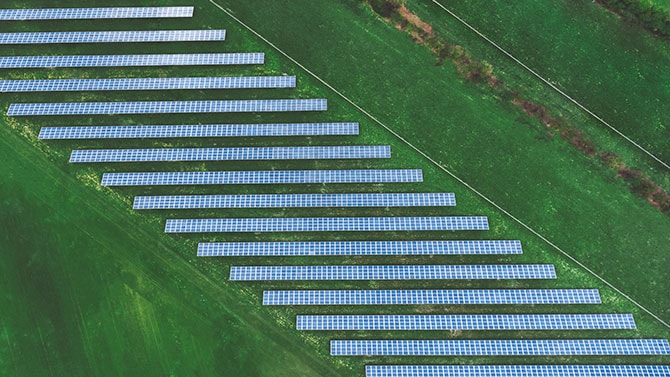

De-risking the energy transition in Europe
Europe’s net-zero transition needs an investment of US$32 trillion by 2050. This requires tripling investments yearly and developing financing strategies.
PwC helps you deliver sustainable, resilient and inclusive capital projects and infrastructure in an uncertain world.
Infrastructure is critical to achieving the world’s climate goals. According to the United Nations Office for Project Services (UNOPS), approximately 80% of the world’s current greenhouse gas emissions come from infrastructure.
Our clients—whether they are policymakers, construction contractors, financiers or corporates—have a critical role to play in delivering and maintaining sustainable, resilient and inclusive infrastructure. We understand the unique challenges of your industry, and are ready to help you manage these challenges and capture the opportunities that change brings.

Recent events are having a real impact on infrastructure investment and delivery, creating both challenges and opportunities. The biggest factors driving change include increasing technology adoption, the urgent need for sustainability and growing requirements for operational resilience and security.
Around the world, we help our clients plan, finance, manage and deliver large-scale capital projects and infrastructure. Combining engineering, technology, industry and finance experience and knowledge, our teams work with companies throughout the full lifecycle of their capital projects. Our clients are from both the public and private sectors and include investors, contractors, owners, shareholders and users.
Many countries have long underinvested in infrastructure and must now also repay increased debt accrued during the COVID-19 pandemic. Infrastructure projects will need to be affordable for taxpayers and users, and will need to be stable, or investors won’t be interested in financing them.
Private capital remains plentiful, and regulations and reporting requirements are driving the availability of sustainable financing products. But a majority of infrastructure capital has yet to be invested as investors look for lower-risk opportunities. More private finance is particularly needed in emerging markets. This creates challenges around how to make projects investable and how to create income sources to repay private capital, particularly for climate resilience projects.
PwC can help clients design incentivisation and commercial models and public-private partnerships (PPPs) to help overcome these challenges. We can also help prepare investable projects and finance using a range of financing methods, such as PPPs or blended finance.
Electric transmission infrastructure that is strategically flexible enables the achievement of environmental goals and better returns.


Accelerating progress in Asia-Pacific’s energy transition presents an enormous opportunity to marshal the powerful combined forces of public and private capital.
Learn how green building materials can address sustainability challenges in construction and minimise carbon emissions.


The key to closing the infrastructure investment gap in emerging markets.
This analysis of global commitment to delivering green infrastructure shows pathways for private financing amid a known divide between rich and poor countries.


Affordability of the global infrastructure transition should be at the top of the policy agenda. Tackling climate change means radically transforming the vast network of infrastructure that makes the modern world turn. We can’t afford not to act, yet the cost of this transition is difficult to quantify.
The infrastructure sector sits at a collision point of global disruptions, including a shift in capital availability, evolving social and environmental priorities and rapid urbanisation. Explore our series looking at the overarching forces that will influence the future of the infrastructure industry.



Europe’s net-zero transition needs an investment of US$32 trillion by 2050. This requires tripling investments yearly and developing financing strategies.


No question, 2023 has been a challenging year for infrastructure funds. Against a backdrop of geopolitical tensions, high inflation and rumbling economic uncertainty, it’s hardly surprising that their deal activity has been subdued. The silver lining? That funds are embarking 2024 with large pools of “dry powder”...


COP28: three big takeaways for the global infrastructure sector – all providing grounds for optimism


Download PDF -
Explore the role of clean hydrogen in decarbonizing hard-to-abate sectors as well as barriers to clean hydrogen development and adoption.


Download PDF -
Catalytic collaboration between governments and the private sector is crucial for optimising industrial policy and driving climate progress.


Download PDF -
Electric transmission infrastructure that is strategically flexible enables the achievement of environmental goals and better returns.


Download PDF -
Accelerating progress in Asia-Pacific’s energy transition presents an enormous opportunity to marshal the powerful combined forces of public and private capital.


Download PDF -
Reconfiguring the industrial system to avoid the worst consequences of climate change will take audacity and practicality.


Download PDF -
Sustainable aviation fuels (SAF) can help the aviation industry achieve net zero by 2050, but the industry must rapidly increase production and investment.


Download PDF -
The key to closing the infrastructure investment gap in emerging markets


Download PDF -
The world has made significant progress towards achieving net zero by 2050. But to attain the end goal, key gaps must be addressed.
